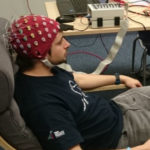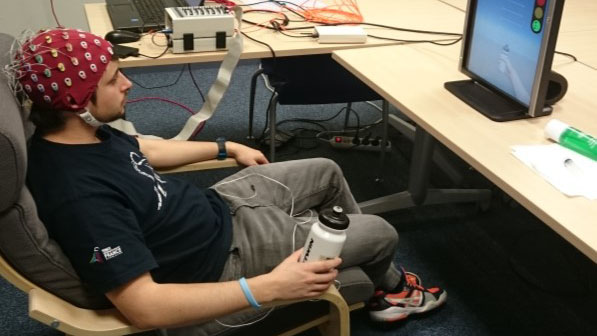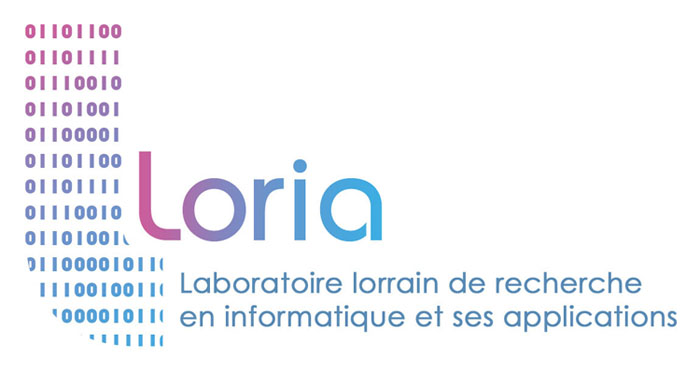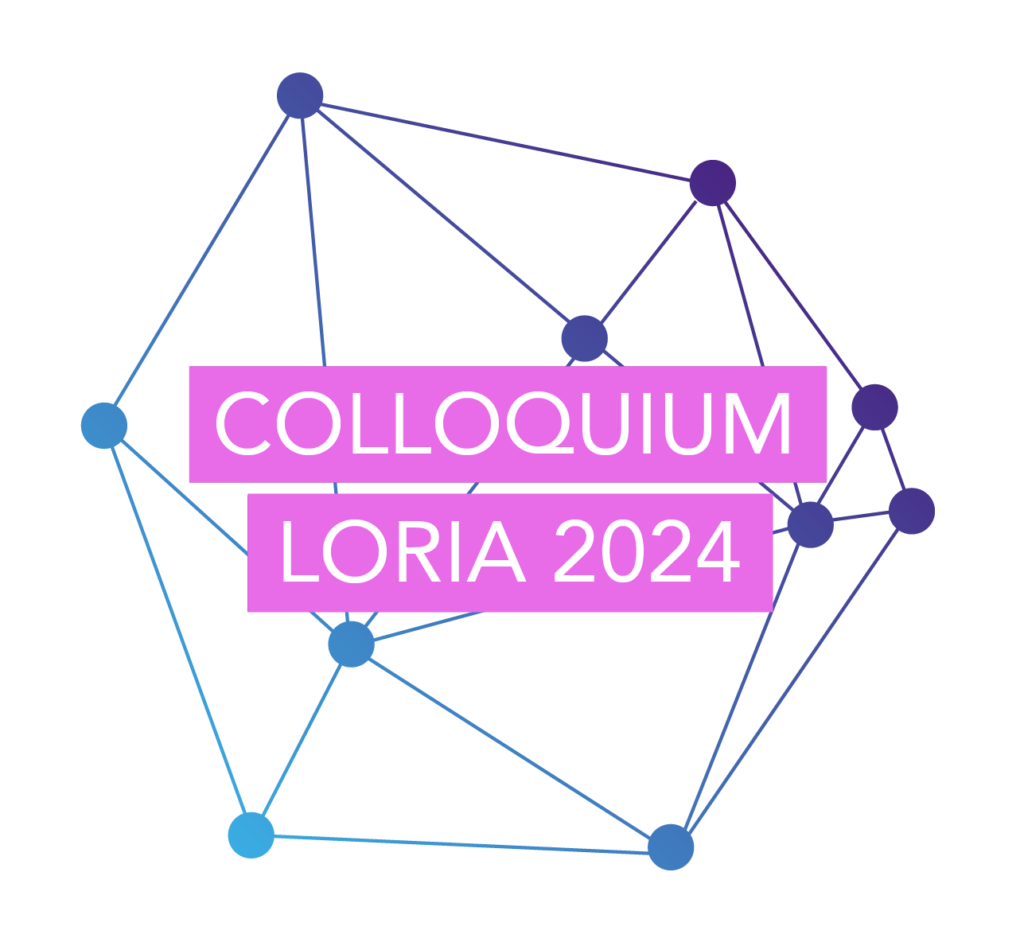Grasp-IT: a brain-computer interface for improving stroke rehabilitation

16 November 2020

© Laurent Bougrain / Inria
“I was really surprised, but also really proud. It was a great way to cap off my PhD.” Sébastien makes no secret of his satisfaction. Back in October, the 31-year-old postdoctoral researcher, who studied for his PhD at Loria, was given the Best Student Paper award for the workshop on human-machine interfaces for the IEEE SMC conference, an international event for experts in systems engineering, human-machine interfaces and cybernetics. The panel gave the award supported by IEEE society and the U.S. brain initiative in recognition of an article that was jointly authored with Stéphanie Fleck, a member of the PErSEUs project team (University of Lorraine), and Laurent Bougrain, head of the Neurosys project team. Since January, these three researchers have been working together in the context of Grasp-IT, an innovative brain-computer interface (BCI) project that is supported by the French National Research Agencyand coordinated by Laurent Bougrain1. This device, which lets users send commands to a machine using a headset equipped with electrodes, was central to the study Sébastien presented at the IEEE SMC conference.
Improving the learning of kinesthetic motor imagery
Imagine controlling a virtual hand and getting it to squeeze a virtual flask filled with water, using just your brain activity. This is an example of the type of experiment carried out by Sébastien Rimbert and which he explores in his paper, opening up new avenues for improving the learning and development of kinesthetic motor imagery (KMI). “This is a mental task that involves memorising a movement, focusing not on the visual aspect of the task being performed but on the sensations experienced during the actual movement: sensations in the central nervous system in terms of muscular contractions, sensations of pressure or heat, feelings on the skin”, explains Sébastien Rimbert. Who could KMI be of use to? “It could be used by musicians or top-level athletes seeking to improve a specific motion, but it is primarily aimed at stroke victims. ”For the latter, KMI can improve motor rehabilitation by stimulating damaged areas of the motor cortex.”
From real movement to immobility
“In the absence of any sensory feedback, patients and therapists need intuitive information in order to help them determine if the KMI has been properly performed and to improve motor rehabilitation.” This is where the Grasp-IT brain-computer interface comes in. This interface provides visual feedback in 3D, with a subjective view inviting users to generate KMI, evaluate their performance and improve. In his paper, Sébastien compares two different ways of learning KMI using the Grasp-IT interface: trial and error learning and progressive learning. He stresses the benefits of the second way, which involves subjects being guided by an experimenter through three main steps: feeling the movement, “with your eyes closed, becoming aware of all the sensations you experience when performing a motor task”; feeling the KMI, “gradually reducing your muscular activity until you stop moving altogether, but staying focused on the sensations”; and, lastly, practising KMI, “training yourself to develop KMI at the request of the brain-computer interface”.
Having since joined the PErSEUs project team in Metz, Sébastien has been expanding upon his research into kinesthetic motor imagery. Following research into hypnosis and anaesthesia awareness, he has contributed to the development of Grasp-IT, the goal of which is to assist withrehabilitation for stroke victims, in collaboration with researchers, healthcare professionals and manufacturers. “KMI is not a natural task. Our research requires a lot of effort and determination, but whole new applications are opening up, at the crossroads between IT, neuroscience, health and psychology”, explains the young researcher.
More :
- The paper published on HAL-Inria “Sébastien Rimbert, Laurent Bougrain, Stéphanie Fleck. Learning How to Generate Kinesthetic Motor Imagery Using a BCI-based Learning Environment: a Comparative Study Based on Guided or Trial-and-Error Approaches. Systems Man and Cybernetics 2020, Oct 2020”
- Brain Computer Interface – BCI is a project in partnership with Loria (UMR 7503), PErSEUs (EA 7312, University of Lorraine), the department of physical medicine and rehabilitation at Rennes University Hospital, the Regional Rehabilitation Institute in Lay St-Christophe, Alchimies (a limited liability company), Toulouse University Hospital, the Inria project-teams Hybrid and Camin respectively in Rennes – Bretagne Altlantique and Sophia Antipolis – Méditerranée research centres.
- Website Sébastien Rimbert
Editor: Inria Nancy – Grand Est
Read it on: www.inria.fr


